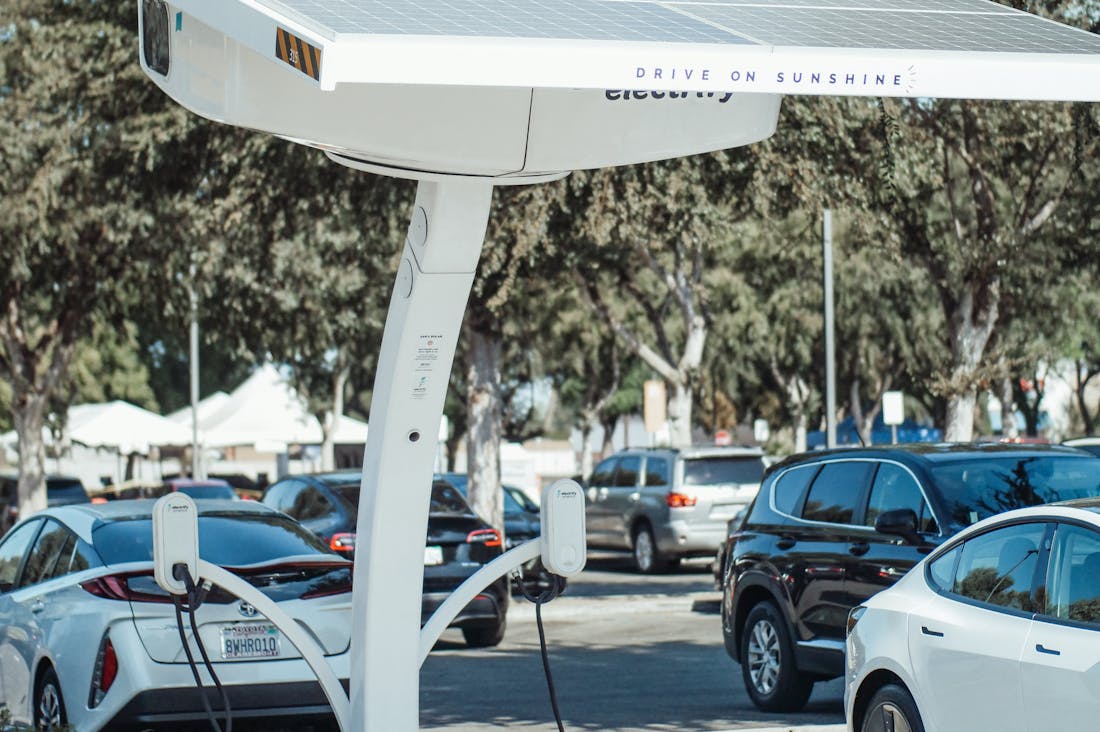In an era where climate change and environmental sustainability are paramount concerns, eco-friendly driving has emerged as a vital component of responsible automotive practices. This guide explores innovative technologies and actionable tips that can transform your driving habits. By embracing these eco-conscious strategies, you can minimize your carbon footprint while enjoying a more sustainable auto lifestyle. Whether you're considering electric vehicles, optimizing fuel efficiency, or adopting smarter driving techniques, the road to a greener future begins with informed choices behind the wheel. Let's drive towards a more sustainable tomorrow together!

The Rise of Electric Vehicles
The rise of electric vehicles (EVs) marks a significant transformation in the automotive industry, driven by growing environmental concerns and advancements in technology. As awareness of climate change intensifies, consumers and governments alike are shifting towards more sustainable transportation options. EVs produce zero tailpipe emissions, contributing to cleaner air and reduced fossil fuel dependency. Major automakers are investing heavily in electric technology, with numerous models hitting the market and improvements in battery efficiency, range, and charging infrastructure. Additionally, government incentives and subsidies encourage adoption. As charging stations become more widespread and vehicle prices decrease, the transition to electric vehicles is poised to reshape urban landscapes and redefine mobility in the coming decades.

Sustainable Driving Habits
Sustainable driving habits are essential for reducing the environmental impact of our transportation choices. By adopting practices such as maintaining a steady speed, avoiding unnecessary idling, and keeping tires properly inflated, drivers can optimize fuel efficiency and minimize emissions. Embracing carpooling or using public transport when possible not only reduces traffic congestion but also lessens the carbon footprint associated with individual travel. Additionally, integrating eco-friendly technologies like electric or hybrid vehicles into daily commutes can further enhance sustainability. By being conscious of our driving patterns and making informed choices, we can collectively contribute to a healthier planet while also saving on fuel costs.

Future Technologies in Eco-Friendly Transportation
Future technologies in eco-friendly transportation are poised to transform how we move while minimizing environmental impact. Innovations such as electric vehicles powered by advanced battery technologies, like solid-state and lithium-sulfur batteries, promise greater efficiency and reduced charging times. Hydrogen fuel cells are emerging as a sustainable alternative for long-distance travel, emitting only water vapor. Moreover, autonomous and connected vehicles can optimize routes and reduce traffic congestion, leading to lower emissions. The integration of renewable energy sources, such as solar and wind, into public transportation systems, along with the development of hyperloop and magnetic levitation trains, could revolutionize intercity travel. These advancements collectively aim to create a sustainable, efficient, and cleaner future for global transportation.
The Role of Government Policies in Promoting Eco-Friendly Driving
Government policies play a crucial role in fostering eco-friendly driving practices by providing frameworks that incentivize sustainable transportation. Tax credits for electric vehicle purchases, subsidies for renewable energy installations, and investments in public transport infrastructure are just a few examples. Furthermore, stricter emissions regulations encourage manufacturers to innovate and produce more efficient vehicles. Local governments can also implement initiatives such as carpool lanes, congestion pricing, and bike-sharing programs, which promote alternative modes of transport. These policies not only facilitate the transition to greener vehicles but also cultivate a culture of environmental responsibility among citizens.
Community Engagement and Its Impact on Eco-Friendly Driving
Community engagement is essential for fostering a collective commitment to eco-friendly driving habits. Local initiatives, such as car-free days, educational workshops, and community challenges, can empower residents to adopt sustainable practices. Involvement in community clean-up events or tree-planting activities can also raise awareness about the importance of reducing carbon footprints. Social media campaigns that encourage sharing eco-driving tips and experiences can foster a sense of camaraderie among participants. Furthermore, local businesses can partner with communities to provide incentives for those who choose environmentally friendly transportation options, thus creating a supportive ecosystem for driving sustainably.
The Importance of Vehicle Maintenance for Eco-Friendly Driving
Regular vehicle maintenance is pivotal for ensuring that cars operate at peak efficiency and minimize their environmental impact. Simple practices, such as timely oil changes, air filter replacements, and spark plug inspections, can enhance fuel economy significantly. Keeping the engine in optimal condition reduces emissions and prolongs the lifespan of the vehicle. Additionally, ensuring that the exhaust system is functioning properly prevents harmful pollutants from being released into the atmosphere. Drivers should also consider the eco-benefits of using environmentally friendly products and services for car care, such as biodegradable cleaners and recycled materials, which further support sustainable driving.
Innovative Car Technologies That Enhance Sustainability
The automotive industry is continuously evolving, bringing forth innovative technologies that enhance sustainability. Developments like regenerative braking systems allow electric and hybrid vehicles to recapture energy during braking, improving overall efficiency. Moreover, advancements in lightweight materials, such as carbon fiber and aluminum, help reduce vehicle weight, leading to lower fuel consumption. Smart driving systems that provide real-time feedback on driving habits encourage more efficient driving behaviors. Furthermore, the rise of vehicle-to-grid technology allows electric vehicles to not only draw energy from the grid but also return excess energy, contributing to a more balanced and sustainable energy ecosystem.
AI-Assisted Content Disclaimer
This article was created with AI assistance and reviewed by a human for accuracy and clarity.